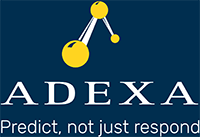Is Your S&OP plan Executable?
Some of you may remember the TV ad for a new microwave oven that browned the meat. The question an audience member, in the ad, kept asking was: “But does it brown the meat?” In other words, never mind all that it does, what matters is having a nice roasted brown meat on the table! In the same context, when you are acquiring S&OP solutions, the key question is: Does it generate executable plans, without user intervention?
In general, most S&OP solutions are too high level to generate a plan that you can execute and rely on because it lacks model accuracy. For example, reliable commit dates and accurate financial projections cannot be generated for the short term of days to months. Hence user adjustments must be made to make the plans executable. A long and time-consuming process that is unnecessary! What sets planning and execution apart is really the horizon and timing between when the decision is made and when it is realized. In general, we plan for responsiveness and execute for reliability. The more accurate model of the world we have, the better plans we can make resulting in being more responsive to changes that had not been predicted. Unfortunately, most current S&OP planning systems rely too much on human judgement and a very basic model of the supply chain, just like spreadsheets.
Lack of plan accuracy in modeling causes inappropriate reservation of capacity and material resulting in constant fire-fighting when it comes to execution. Some say, S&OP gives visibility. With an inaccurate model of the supply chain, this kind of “visibility” is very foggy! To this end, model completeness is crucial for accurate planning. The second and more important factor is the ability to perform predictive planning not just response planning. Predictive planning is capable of predicting potential risks in the supply chain and avoiding shortages or redundant inventory. It also ensures that adequate mix of products are made available based on various factors such as weather, region, type of customer, volume of products etc.
Although demand planning is intended to help with future needs of the customers, however, it only identifies the potential needs and requirements but it does not have any knowledge of supply risks and how to avoid the potential problems on the supply side. This is the job of predictive supply planning with model accuracy and appropriate prescriptive algorithms. How accurate is your model of your supply chain? Are you still using bucketed capacities, static lead-times and pre-defined bottleneck resources? If so, consider moving to predictive planning that deploy S&OE to represent a true digital twin of your supply chain. Experience tells us, we can accomplish close to 100% plan accuracy and seamless execution of plans with much better visibility, reliable commit dates and financial projections. This is what digitalization is all about. Building digital twins that can mimic both the structure and behavior of your supply chain. Thus, the digital driving the physical supply chain. Learn more about plan accuracy and digitalization and how S&OE can help HERE.




